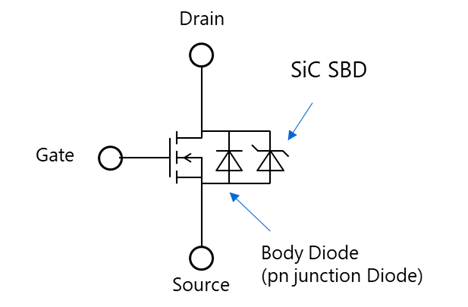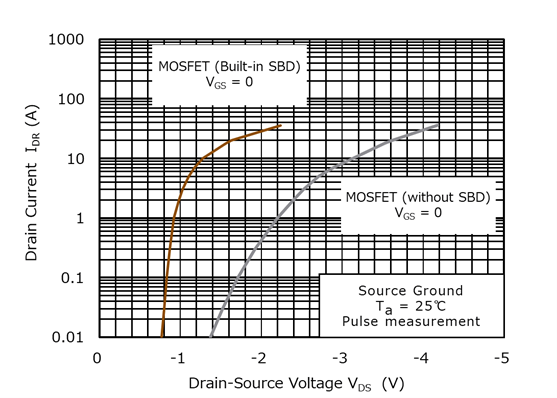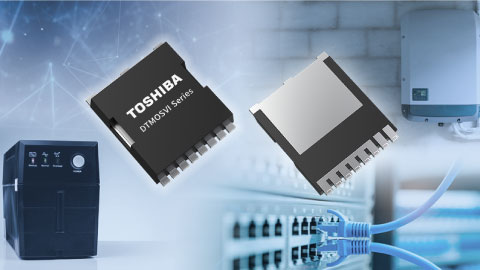- General Top
- SEMICONDUCTOR
- STORAGE
- COMPANY
-
My ToshibaSemicon
- Semiconductor Top
-
ApplicationsAutomotive
Body Electronics
xEV
In-Vehicle Infotainment
Advanced Driver-Assistance Systems (ADAS)
Chassis
IndustrialInfrastructure
BEMS/HEMS
Factory Automation
Commercial Equipment
Consumer/PersonalIoT Equipment
Healthcare
Wearable Device
Mobile
Computer Peripherals
-
ProductsAutomotive Devices
Discrete Semiconductor
Diodes
Transistors
Logic ICs
Analog Devices
Digital Devices
Wireless Devices
※
: Products list (parametric search)
Power SemiconductorsSiC Power Devices
※
: Products list (parametric search)
Isolators/Solid State RelaysPhotocouplers
Digital Isolators
Solid State Relays
Fiber Optic Transmitting Modules
※
: Products list (parametric search)
MOSFETsIGBTs/IEGTsBipolar Transistors※
: Products list (parametric search)
Diodes※
: Products list (parametric search)
MicrocontrollersMotor Driver ICsIntelligent Power ICs※
: Products list (parametric search)
Power Management ICsLinear ICs※
: Products list (parametric search)
General Purpose Logic ICsLinear Image SensorsOther Product ICsOther Product ICs
※
: Products list (parametric search)
-
Design & Development
-
Knowledge
- Where To Buy
- Part Number & Keyword Search
- Cross Reference Search
- Parametric Search
- Stock Check & Purchase
This webpage doesn't work with Internet Explorer. Please use the latest version of Google Chrome, Microsoft Edge, Mozilla Firefox or Safari.
require 3 characters or more. Search for multiple part numbers fromhere.
The information presented in this cross reference is based on TOSHIBA's selection criteria and should be treated as a suggestion only. Please carefully review the latest versions of all relevant information on the TOSHIBA products, including without limitation data sheets and validate all operating parameters of the TOSHIBA products to ensure that the suggested TOSHIBA products are truly compatible with your design and application.Please note that this cross reference is based on TOSHIBA's estimate of compatibility with other manufacturers' products, based on other manufacturers' published data, at the time the data was collected.TOSHIBA is not responsible for any incorrect or incomplete information. Information is subject to change at any time without notice.
require 3 characters or more.
What are the characteristics of body diode in SiC MOSET?
A body diode in a general SiC MOSFET is a SiC pn junction diode. The reverse recovery time (trr) of this pn junction diode is faster than that of a normal Si pn junction diode.
As shown in Figure 1, Toshiba’s third generation SiC MOSFET has a built-in SiC Schottky barrier diode (SBD) between SiC MOSFET’s drain and source. This reduces the inductance due to wires and circuit boards when the SBD is connected externally. Threfore Toshiba’s third generation SiC MOSFET is a suitable device for reducing the losses and noises caused by high frequency switching. In addition, the forward voltage (VF) is smaller than that of SiC MOSFET without a built-in SBD, and conduction loss can be reduced as shown in Figure 2.
Built-in SBD is also effective for improving reliability. As mentioned above, Toshiba’s SiC MOSFET has a built-in SiC SBD and is designed to be less conductive to the body diode (pn junction diode). This reduces the risk of variations in characteristics such as the forward voltage of pn junction diode (VF), the threshold voltage (Vth) and the on-resistance (RDS(ON)) of SiC MOSFET, due to crystal dfects generated during long-term operation.


Related links
The following documents also contain related information.


